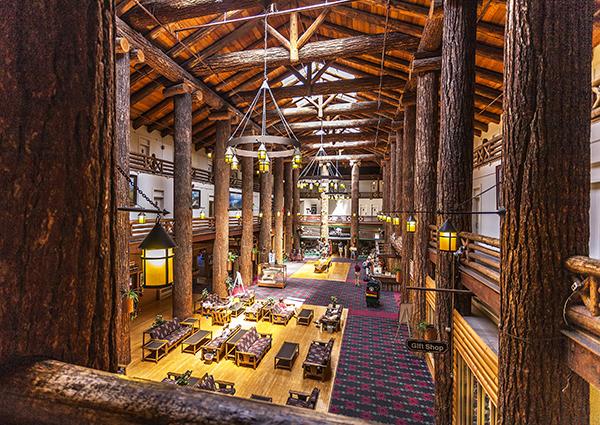
The Glacier Park Lodge lobby, Glacier National Park / Rebecca Latson.
Traveler contributor Jim Burnett wrote a December 2014 article centering on the fun of getting to a national park. Once you actually are in the park, how about a little more fun'¦photographing the park's lodging!
While much has been written (and filmed) about national park lodging (example: PBS's 'Great Lodges of the National Parks' and Travel & Leisure's 'Great National Park Lodges'), photographers - in their zeal to get out into nature to photograph those amazing landscapes or dramatic wildlife portraits - oftentimes forget about the awesome photo ops provided by these historic and rustic national park lodges. There's something warm and inviting about all of that natural stone and brown timber and orange fire from a fireplace, rimmed by golden lamplight on tables next to chairs or couches, beckoning the visitor to sit and relax for a moment, an hour, or all day.
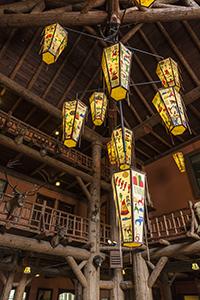
The chandelier in the Lake McDonald Lodge lobby, Glacier National Park / Rebecca Latson.
You don't have to actually stay in a national park lodge to enjoy photographing the lodge. I'm certain most of you camping in a tent, trailer or RV have at least walked into a national park lodge to use their restroom, eat or request park information. Right? While you were inside the lodge, you probably noticed something neat about the interior, like tall wood beams, or a large stone fireplace, or perhaps some local artwork hanging on the walls (or hanging from the ceiling in the form of lampshades such as what is seen in the main lobby of Lake McDonald Lodge in Glacier National Park).
Following are a few tips I use that might help you bring out the best in your interior lodge shots.
- If you are actually staying in the lodge for the night, then either very late at night (11:00PM ' midnight) or very early in the morning (4:00 ' 5:00AM), you can pretty much be assured there will be no people in your interior compositions (I did that while staying at the Stanley Hotel located in Estes Park, Colorado, right next to Rocky Mountain National Park).
- If you have a flash on your camera, experiment with it, but be prepared to reduce your chances of getting that ambient lighting. On the other hand, using a flash will ensure that your images are nice and sharp and clear and the colors of your subject(s) will be true.
- If you want to capture the ambient light, then don't use a flash, turn your camera's ISO up (anywhere from 640 ' 3200 or more), open up f-stop a little, and use a tripod for longer shutter speeds.
- If you've got a wide-angle lens, use it. Capture as much of the interior as you possibly can.
- If you don't have a wide-angle lens, or, if there is only a part of the interior in which you are really interested, then narrow your focus onto just that one thing: a lamp, a candle, a chair, a carved flagstone on the floor, etc.
- Turn your lens up to photograph the ceiling.
- If the lobby is one of those with interior balconies (like the Many Glacier Hotel or Lake McDonald Hotel or Glacier Park Hotel in Glacier National Park), then go up a couple of floors and point your camera across and downward.
- If there are people in your composition, don't fret as they add scale and reference. You can get a really funky image by setting your camera on a tripod and then experimenting with lengthy shutter speeds so that the people moving around are kind of transparent and/or produce a sort of 'blurred movement' trail like the tail light trails of a car in a night shot.
- Getting interior shots can be problematic either because of dim tungsten, ambient light and/or large differences between the natural light streaming through windows versus the dim tungsten/candle/fireplace light. If you are photographing an area with a wide range of lighting, there are a couple of things you can do to ensure your entire image is not either under- or over-exposed (although both require post-process work with your photo editor program):
- Take two photos; expose one shot for the bright light and the other shot for the darker area(s). In your editing program, apply the photographic equivalent of a Vulcan mind meld and blend both shots together, revealing the best of each shot.
- If you only take one photo, then reduce the shadows and the highlights; I use Adobe Lightroom which has tools for both of these aspects. I move the highlights slider to the far left to -100 and the shadows slider to the far right to 100 and then play around with the exposure. Your own photo editor probably has similar tools with which to work.
- If you hang around until after dark, don't forget to get an outside view of the lodge looking in to all of those warm, bright, invitingly-lit windows while capturing a little bit of exterior starlight at the same time, like I did with the Paradise Inn Hotel at Mount Rainier National Park. You can do this by setting your camera on a tripod and playing around with long shutter speeds and/or increased ISOs. You might even want to set your f-stop to 22 to try and get starbursts from the stars, moon, lamplighting, etc. This is another one of those times when you may either have to take two photos (one for capturing the stars and another for correctly exposing the lights in the windows) or play with your highlights/shadows during the editing stage.
- Oh, and If you are rolling your eyes by now over the thought of taking up film or space on a memory card photographing an interior when you could be outside capturing lovely landscape shots, stop a moment and think about the neat shots you can get of an amazing view simply by using a lodge's interior from which to frame your composition. I did just that while staying at Camp Denali in Denali National Park.
Whatever you do, don't just take a quick snap of the lodge's interior and be done with it. You may or may not like to be around civilization when you are visiting a national park, but lodges are a large part of many national parks; with that 'brick & mortar' comes history, ambiance, and what could turn out to be some very memorable images.
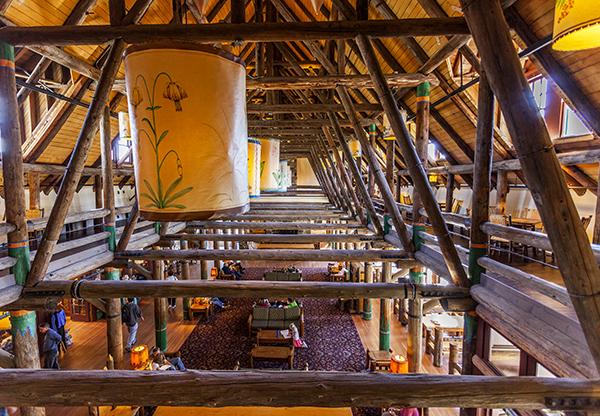
A view below from above inside the lobby of the Paradise Inn Hotel, Mount Rainier National Park / Rebecca Latson.
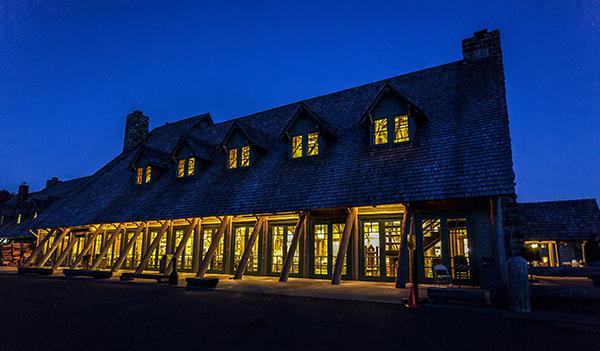
Starlight and lamplight at the Paradise Inn Hotel / Rebecca Latson.
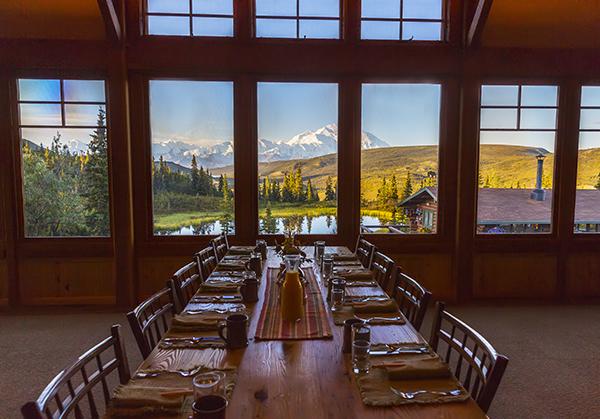
A breakfast view at Camp Denali in Denali National Park / Rebecca Latson.



Comments
Another morning brightened by some great photos and tips. Thanks, Rebecca.
Thanks for sharing these tips Rebecca! There is a special feel to these older stone and log hotels, and I've experienced the challenges you mention with the limited light. Your story reminds me that I need to be more willing to try higher ISO settings at times. (My reluctance to do so is probably an indication of which generation I'm in, and all those bygone years when everything was limited by the film in my camera!)
For those of us who primarily "shoot for fun," digital has offered the chance to enjoy photography without the limits of film and processing costs.
Nice shots. Good memories of the Paradise lodge, and longing to see the Denali. I suppose those two feelings are what you would want to gen with your photos.
Thanks, everybody, for the kind words! Yes, Jim, I love these historic lodge - staying in them as well as photographing them. I used to be worried about high ISO, until the advent of noise control plug-ins that help tame the issue.
Lovely images and helpful tips! I agree with you that the lodges in national parks have lots of history and character - and they often carry many wonderful memories.